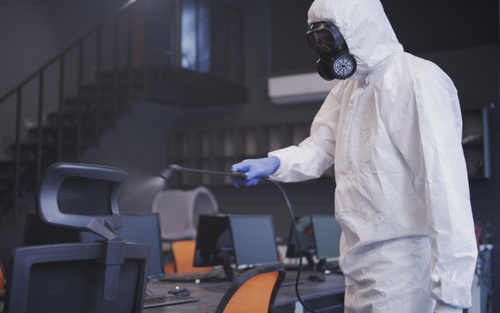Selecting a Hazmat Suit
Jobs that require a lot of contaminated area cleanup—like asbestos and lead removal—require hazmat suits. Hazmat suits are overall garments that protect workers from chemicals, biological agents, radioactivity, and other hazardous materials.There are a variety of Hazmat suits, each created for different hazards, and it’s crucial to make the right choice in protection.
Consider Your Criteria
When selecting your hazmat suit, no matter what hazards you’re facing or what protection levels are used in your industry, there are a few general qualities that are important to look for. Some things to consider when researching hazmat suits are:
Weight: Will the suit be too heavy to wear comfortably? Some suits are thinner and lighter, which is great for emergency situations and better for workers’ health and endurance.
Maneuverability: Some suits are easier to move in than others, which is crucial in a dangerous situation. A good suit will let you squat, bend over, and reach your arms into the air without too much restraint.
Materials: What materials do you need? Different materials will react differently to worksite conditions like abrasion, chemicals, and extreme temperatures, which can affect what industries they’re good for and the hazards they protect against (especially where permeation and penetration are concerned). Materials will also determine how heavy or stiff a suit gets.
Fit: Well-fitting gear is more comfortable and more likely to be used properly. Consider not only the complete suit, but individual components like gloves, visors, internal belts, and integral booties.
Construction: How are the different components of the suit put together? What are the seams like? If there are multiple layers, are they attached? Will you need welded components?
Maintenance: Shelf life is an important part of safety and cost savings for reusable suits. Look at the suit as well as the exhaust valves for any maintenance requirements, including components you have to change out and how long you can expect the parts to last.
Once you’ve bought a suit, take a test walk in it. It’s best to get to know the ins and outs of your PPE before you need it rather than trying to get comfortable in an emergency.
Suit Recommendations
Each worksite and job is unique, but we have some general recommendations and can always help you find more specific PPE for your needs.
For a range of hazards encountered on DIY jobs, including mold remediation, paint spraying, lead, and asbestos removal: DuPont Tyvek 400 Disposable Hazmat Coverall Suit.
For harmful or irritating dry particles and spray protection in a non-sterile environment: DuPont Tyvek 400 HazMat Coverall Suit.
For wet biological and chemical protection, including in healthcare with dangerous pathogens: DuPont Tychem 9000 Protective HazMat Coverall.
Still Have Hazmat Suit Questions?
PK Safety has been in the worksite safety business for decades, constantly looking for new and better ways to protect workers. If you still have questions about selecting hazmat supplies, contact us online or by calling 800.829.9580.
Recent Posts
-
Customizing Gas Detectors: Tailoring Solutions to Fit Your Unique Requirements
In today’s diverse industrial landscape, a one-size-fits-all approach to safety simply doesn’t cu …Jul 3rd 2024 -
10 Ways to Prevent Wildfires
You can prevent wildfires by extinguishing flames before you leave the worksite. Avoid practicing …Jul 1st 2024 -
ANSI/ISEA 138 Safety Gloves: Ensuring Hand Protection
The human hand is an anatomical masterpiece and arguably the greatest tool attached to our bodies …Jun 25th 2024





